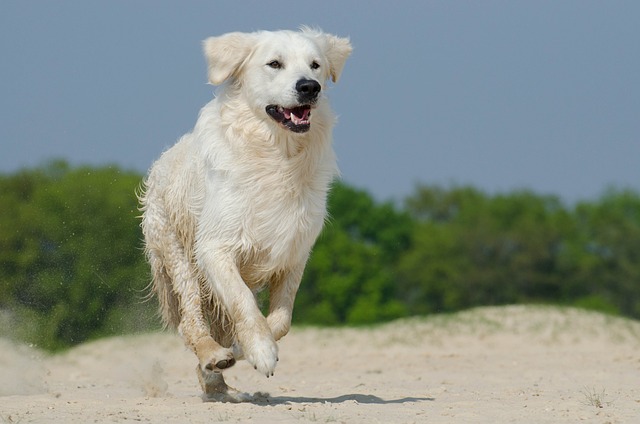How to Identify Pure Golden Retriever? 7 Gold Clues
Do you know if you have a Pure golden retriever or not? The key indicators and characteristics of pure Golden Retrievers include their appearance, temperament, and lineage.
Welcoming a Golden retriever puppy into your home is an exciting and joyful experience. However, many dog owners may be concerned about their golden retriever’s purity and want to ensure they have a genuine purebred companion. This article will explore the various aspects that can help you determine if your golden retriever is purebred. From physical characteristics to temperament traits and lineage verification, we’ll cover everything you need to know.

Pure Golden Retriever Identification
Before identifying the purity of your golden retriever, it’s essential to know what constitutes a purebred Golden Retriever. Pure golden retrievers are dogs that come from a long line of registered golden retrievers and adhere to breed standards set by kennel clubs. Here are 7 Characteristics of Purebred Golden Retrievers that identify if the dog is pure, mixed, or fake.
1. Neat and square head
Golden Retrievers have neat heads. There are obvious bony protrusions on the top of the head. The skull is broad and the fore face deep and broad. Viewed in profile, the muzzle is straight, with a smooth and stable joint to the skull. Viewed from the front, the forehead is slightly deeper and wider than at the tip, with the upper jaw powerful and completely scissor-shaped.
The whole head looks neat and square, and the mouth is like a cuboid.
2. Sufficient bone, wide claws, thick limbs
If you want to know if your Golden Retriever is pure or impure, look at his bone mass. When choosing a golden, you can touch its limbs. The Solid Gold Retriever is heavy-boned, well-footed, with thick limbs and broad paws. Golden retrievers with these characteristics will be strong when they grow up.
3. The body is strong and strong, with smooth lines
Once you see the bone mass of a Golden Retriever, you can also see the shape and shape of the Golden Retriever. The Golden Retriever is a medium to large-sized dog. It is well-proportioned, powerful, and stable, with reasonable coordination of all parts of the body, neither long legs nor bulky, strong chest, level back, well-developed psoas muscles, and graceful lines. If the Golden Retriever is too thin, it is a disqualification.

4. No chrysanthemum tail
When choosing a golden retriever, you can also see the Golden Retriever’s tail. Pure Goldens do not have a “daisy tail,” which is a tail that hangs naturally when relaxed, not curled. If it is a purebred Golden Retriever, its tail is as long as its front legs. So if you want to know if your dog is a “fake dog”, you can also use a ruler to measure the length of the tail and front legs.
5. Brown eyes
The eyes of purebred golden dogs are brown and set widely apart. When the Golden Retriever is looking straight ahead, the eyes should not appear white. This is also a way to identify purebred Retrievers.
In addition, when raising a golden retriever, keep a light diet, otherwise, problems such as tear stains and eye feces will easily appear.
6. Powerful wide mouth
When picking a golden retriever, you can also hold its mouth with your hand. In the medium range, the wider the mouth, the more force you can hold in your hand. Such a golden retriever will grow up to be beautiful. Otherwise, it will grow into a dog with a pointed mouth and monkey cheeks, which is a sign of impurity. The mouth of a purebred golden is generally wide, and the mouth skin should be black.
The Golden Retriever has a strong bite force. Usually, you can give it some big bones such as pigs, cattle, and sheep, or dog snacks with moderate hardness and dry chicken to grind its teeth, which can prevent the Golden Retriever from biting the things at home.
7. Long, thick, waterproof hair
The purebred Golden Retriever also has an obvious feature, that is, the hair is elegant, long, and thick, and there are 9 colors ranging from light to dark, generally more golden yellow. Golden retrievers have double layers of hair. Short layers grow well. The jacket is tough, hugs the body, and is waterproof. The hair on the head, feet, and forelegs is short. The color of this coat has a golden sheen in different shades.

The more hair the golden retriever has, the better, and the strings of hair are much less than purebreds.
Golden Retrievers are known as the king of hair loss. In terms of diet, attention must be paid to the balance of nutrition. Feeding human food or high-salt food will aggravate hair loss. Usually, you should choose some dog food with high meat content and occasionally feed some egg yolks, fruits, and vegetables, and the hair will grow better.
Conclusion
Owning a pure golden retriever can be a source of pride for dog lovers. By familiarizing yourself with the physical characteristics, temperament traits, and lineage verification methods discussed in this article, you can confidently determine if your golden retriever is a purebred. Remember, while purity is important to some, what truly matters is the love and companionship these incredible dogs bring into our lives.

